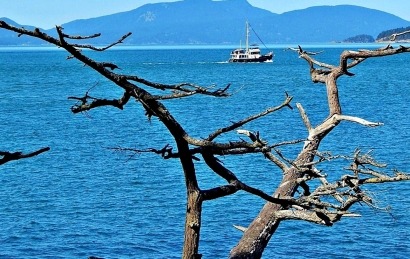
In addition, a community-led river current energy research and development project was selected to receive $9.5 million. Tides and currents are incredibly predictable, meaning these resources could help balance other sources of renewable energy and be important contributors to a 100% clean energy grid.
This funding, supported by the Bipartisan Infrastructure Law, encourages U.S. leadership in tidal and current energy development, supporting the administration’s goals to help communities meet their energy priorities and develop the marine energy sector’s supply chain and workforce.
“With marine energy we can sustainably harnesses the power of the ocean and rivers, providing rural and remote communities with clean reliable power,” said U.S. Secretary of Energy Jennifer M. Granholm.
Tidal Energy Research, Development, and Demonstration Pilot Site
Over the past decade, the U.S. Department of Energy’s Water Power Technologies Office has supported several tidal energy deployment projects. This investment reflects that the industry is now at a phase in development that requires moving from single device testing to array testing with several devices grouped together.
The announcement marks the first of five phases in a $35 million total investment from the Bipartisan Infrastructure Law to support the development and installation of one or more tidal energy devices that can be transitioned to a commercial project.
The selected projects are:
During the competitive first phase, expected to last one year, these two projects will evaluate proposed sites and create plans for licensing, environmental monitoring, site health and safety, site commercialization, stakeholder engagement, community benefits, supply chain procurement, and technology selection and qualification. This phase will culminate in the projects submitting the necessary license and/or permit applications to regulators.
At the conclusion of the first phase, DOE will select one project to proceed through the remaining four phases and receive up to an additional $29 million, concluding with testing and operation of the tidal energy device(s).
Community-Led River Current Energy Research and Development Project
The community-led river current energy project aims to balance community energy priorities and technology innovation. This investment of $9.5 million will help accelerate the development of current energy technologies and promote resilience and economic development in Yukon River and Alaska Native communities.
Many communities on the Yukon and Kuskokwim rivers are powered by local microgrids where the river current potential resource is an order of magnitude greater than average electrical loads.
The selected project is led by the University of Alaska Fairbanks’ Alaska Center for Energy and Power, which plans to develop a replicable, community-led current energy research and development project in the Yukon River at Galena, Alaska. The primary goal is to identify and develop a technology appropriate for the community. This project will help remove barriers to the development of river-based hydrokinetic energy projects (or those that capture power from the natural flow of water) in Alaska’s more than 90 communities with microgrids on or near rivers.

